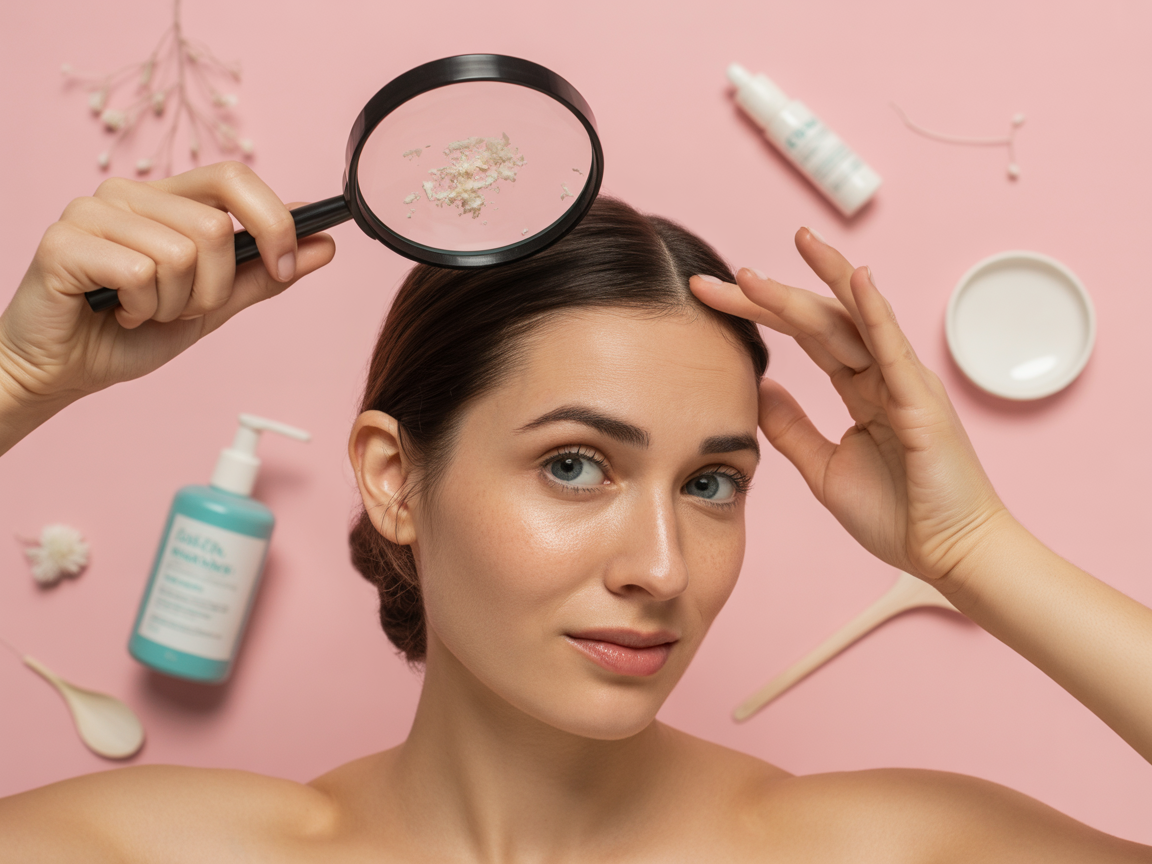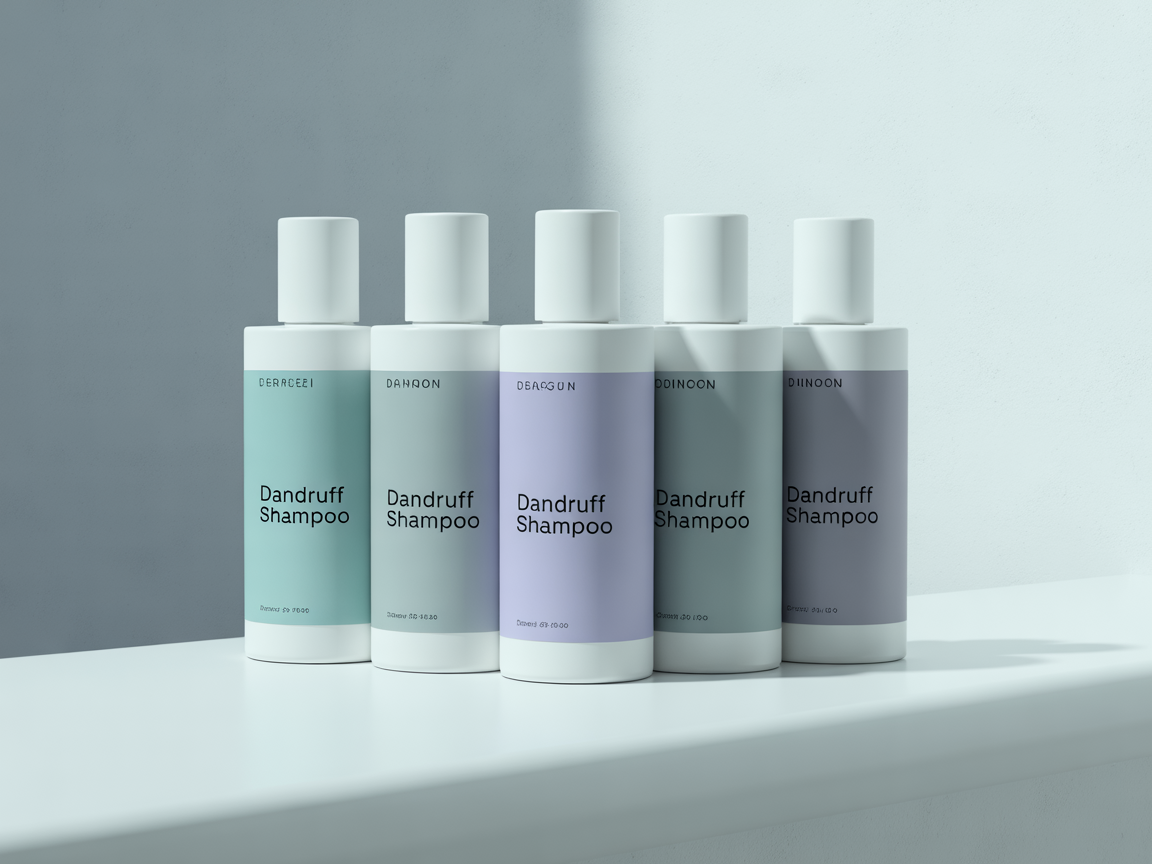How To Get Rid Of Dandruff Fast At Home Naturally Permanently Overnight With This Tips
Despite utilizing costly shampoos, in 2025 more than half of the population will still be affected by dandruff. Those flakes on your shoulders can be troublesome, and many people find they are hard to eliminate even with leading hair care items today.
The problem of dandruff extends well beyond how you look; it can hurt your self-esteem, put your scalp at risk, and alter your social experiences. As products are updated regularly and incorrect information fills the web, it is natural to feel overwhelmed by choosing the right solution. A lot of people spend money on treatments that do not work because they do not realize what is causing their flaky skin.
This article provides a deep dive into what creates dandruff, treatments that work, whether modern or natural, and key mistakes to look out for. No matter if you want medicated treatments, easy DIY methods, or changes to your daily habits, we provide science-based approaches dermatologists suggest in 2025.
If you’re interested in avoiding the irritation of dandruff or seeking trusted ways to improve your scalp health, you will find useful information here.
What Causes Dandruff in 2025?
The first step to treating dandruff successfully involves knowing what is actually behind your symptoms. Our grasp of scalp health has developed a lot in recent years, although the foundation of dandruff has stayed much the same.
Main Triggers for Flaky Scalp
Most cases of dandruff are caused by a fungus that resembles yeast, called Malassezia. Everyone’s scalp has this organism, but it causes inflammation in a subset of individuals. A reaction from your body to Malassezia results in quicker renewal of skin cells, which can result in noticeable flaking from the buildup of dead cells.
Common additional factors are seborrheic dermatitis (which shows as oily, irritated skin), dryness that occurs often in winter, skin’s reaction to hair products, stress or hormonal swings, nutritional deficiencies, and not shampooing often enough to clean the scalp.
In 2025, studies found that microbiome disruptions and pollutant exposure, which had not been thought significant earlier, may trigger dandruff.
Myths vs. Facts About Dandruff
We will address some myths still believed in 2025.
Myth: Dandruff is said to occur because hygiene is lacking.
Myth: Some believe you can catch dandruff from someone nearby, but this is not correct. Almost everyone’s scalp contains the fungi involved in triggering dandruff.
Myth: Dandruff is associated with dry skin alone. Fact: Dryness may make skin flake, but dandruff often occurs with oily scalp and seborrheic dermatitis.
Myth: You might think all anti-dandruff shampoos are the same, but their active compounds function differently, making selecting the correct one meaningful.
Is It Really Dandruff or Have You Mistaken Another Condition?
It is important to identify dandruff before starting any treatment for it. You may be dealing with a different condition if you see thicker, silvery scales (psoriasis), intense itching and redness (eczema), patches of losing hair from a fungal infection (tinea capitis), residue from styling products, or a reaction to certain hair care items (contact dermatitis).
In 2025, dermatologists can use AI scalp scanners at their offices to more precisely tell these conditions apart.

Step-by-Step Guide – How to Get Rid of Dandruff in 2025
Treating dandruff isn’t a one-size-fits-all approach. You will find a combined plan using both well-established techniques and new discoveries here.
Step 1 – Identify Your Dandruff Type
Make sure to find out what type of dandruff you are experiencing ahead of choosing a treatment. Dry scalp dandruff is shown by small white flakes and possible itchiness, worsening during winter months. Oily dandruff is evident by larger, yellowish scales that often remain fastened to the scalp. Fungal overgrowth is associated with continuous flaking along with red spots and extreme itching. Starting to flake after you used new hair products is a sign of product-induced dandruff.
The kind of dandruff you have will guide your choice of treatment method.
Step 2 – Determine Which Treatment Is Best for Your Condition
When you know which type of dandruff you have, use a treatment that is tailored for it. When suffering from a dry scalp, choose shampoos that moisturize with hyaluronic acid or glycerin. Salicylic acid or selenium sulfide shampoos are suggested for those with oily dandruff. Should your dandruff be due to fungi, opt for treatments that include ketoconazole or pyrithione zinc. For product sensitivity, use clarifying treatments and fragrance-free products.
Research published in 2025 indicates that products combining multiple ingredients usually provide superior results than those with just one ingredient. A lot of new products combine antifungal medicines with ingredients that soothe the scalp.
Step 3 – Implement a Good Hair Regimen
Maintaining a good daily hair care routine strongly influences how well dandruff is controlled. Here’s what dermatologists recommend in 2025:
- Understand the cause
- Pick a fitting treatment (medicated/natural)
- Maintain scalp health
- Avoid irritants
- Monitor and adjust
Consistency is key – establish a routine of washing your hair regularly (2-3 times weekly for most people), using warm (not hot) water, massaging shampoo thoroughly into your scalp, letting medicated shampoo sit for 3-5 minutes before rinsing, applying conditioner only on hair ends, and incorporating scalp-specific treatments between washes.
Step 4 – Avoid Common Mistakes
Many people unknowingly sabotage their dandruff treatment. Frequent changes in products stop each treatment from showing its full effect. You should expect to wait 2-4 weeks for improvement when using most medicated shampoos consistently. Further mistakes are applying styling products too often, scratching your scalp, rinsing with very hot water, and forgetting that your diet can play a role in dandruff.

A detailed list of the top shampoos and products specifically for dandruff problems in 2025 is detailed below.
The market for anti-dandruff products has changed dramatically, now featuring options that are stronger and better targeted.
Ingredients to Look For
In 2025, choose anti-dandruff products that prominently feature these ingredients supported by scientific study:
- Ketoconazole: The gold standard antifungal that targets Malassezia
- Pyrithione zinc: Reduces fungal growth and helps remove buildup
- Selenium sulfide: Controls cell turnover and reduces Malassezia
- Salicylic acid: Helps exfoliate dead skin cells from the scalp
- Coal tar: Slows skin cell growth and reduces inflammation
- Tea tree oil: Natural antifungal and antibacterial properties
In 2025, most successful products integrate a number of these agents along with ingredients like aloe vera or niacinamide to minimize skin irritation.
Top 5 Medicated Shampoos in 2025
| Product | Key Ingredient | Price | Effectiveness | Suitable For |
|---|---|---|---|---|
| Head & Shoulders Clinical | Selenium Sulfide | $$ | ★★★★☆ | Oily scalp |
| Nizoral | Ketoconazole | $$$ | ★★★★★ | Chronic dandruff |
| Neutrogena T/Gel | Coal tar | $$ | ★★★☆☆ | Dry flakes |
| Dove Dermacare | Zinc pyrithione | $ | ★★★★☆ | Sensitive scalp |
| The Ordinary Glycolic | Glycolic acid | $ | ★★★★☆ | Mild dandruff |
Budget-Friendly Alternatives
There is no need for everyone to purchase the most expensive dandruff treatments. There are inexpensive choices shown to help, like rinsing with apple cider
Always remember that frequent use of any product outweighs cost considerations, so a basic option may outdo a costly one when employed more frequently.

Natural Remedies That Actually Work
A number of plant-based remedies have recently earned scientific recognition for individuals opting for natural methods.
Tea Tree Oil
This strong natural antifungal compound has been relied upon for centuries and is still valued today. Improved formulations in 2025 are designed to overcome the scent and irritation problems often found in earlier versions.
How to use: You can either add 10-15 drops of tea tree oil to your regular shampoo, or select a shampoo that has tea tree oil included. If you want a targeted approach, blend 5 drops into 2 tablespoons of a carrier oil (such as coconut or jojoba) and apply it to your scalp before you shampoo.
Apple Cider Vinegar
Because of its acidity, ACV helps bring your scalp’s pH back to normal, discouraging fungi that trigger dandruff.
How to use: Combine one part apple cider vinegar together with three parts of water. Following shampooing, place the solution on your head, leave in for 5 minutes, and follow with rinsing. Use once weekly.
Aloe Vera
Scientific findings from 2025 indicate that aloe vera helps decrease inflammation on the scalp. Its antibacterial qualities also help address dandruff.
How to use: Put pure aloe vera gel directly onto your scalp, keep it there for 15 minutes, and then rinse with a mild shampoo. Alternatively, look for shampoos with high concentrations of aloe.
DIY Masks and Scrubs
Using natural solutions may seem slower compared to medications, but they commonly result in a decreased risk of adverse effects in the future.

When to See a Dermatologist?
Even though many over-the-counter treatments help, there are times when dandruff requires a doctor’s intervention.
Signs You Need Medical Advice
A dermatologist should be seen if your scalp becomes severely red or inflamed, dandruff remains unresponsive after four weeks, flaking spreads to areas beyond the scalp, you have scalp pain, irritation, severe itching, or if you start to lose hair along with dandruff.
Getting medical help early may stop problems from getting worse and speed up healing.
Prescription Options in 2025
Stronger versions of ketoconazole (2% compared to OTC 1%), corticosteroid solutions for inflammation, individually made treatments, immune-based injections for serious conditions, and innovative microbiome-targeted therapies that restore healthy scalp flora.
Although these treatments were hard to find before 2023, they have now become typical choices by the year 2025.
Scalp Conditions That Mimic Dandruff
Professionals are able to tell dandruff apart from other scalp problems including seborrheic dermatitis, psoriasis, eczema, fungal infections, and allergic reactions, each requiring unique treatment.
Do you still question if it is dandruff or if there is something more serious involved? An expert dermatologist may use either a simple scalp examination or a biopsy to produce a conclusive diagnosis.
Latest News & Trends in Dandruff Treatments (2025)
Over the last few years, the science of scalp health has seen quick advancements.
New Ingredients in Focus
Lately, anti-dandruff products integrate postbiotics, peptides that rebalance the microbiome, advanced ceramides for moisture barrier strength, antioxidant plant stem cells to ease inflammation, and PHA exfoliants as more tolerant alternatives to harsh acids for people with sensitive skin.
Introducing these compounds signifies picking an ecosystem-centered approach rather than a symptom-centric one.
AI Scalp Diagnostic Tools
Dandruff care is evolving, thanks to home-use scalp scanners that sync with apps, AI algorithms that diagnose your flaking, personalized treatment advice from your scalp data, improved virtual dermatology exams, and devices that track scalp health consistently.
They democratize professional diagnosis of scalp problems for people at home.
The Rise of Scalp Serums
When it comes to dandruff solutions, serums now represent the most quickly growing group. By being used between washes, these potent serums deliver actives right where they are needed, stay on the scalp, do not make hair heavy or interfere with styling, and generally treat dandruff, hair growth, and scalp aging at the same time.
Most dermatologists today suggest the use of a medicated shampoo together with a specialized serum to achieve the best results.

What Works Best – Insights for Dandruff in 2025
After examining the latest research and available treatments, this is what you should know about treating dandruff:
Achieving good results most often depends on recognizing your specific dandruff type, choosing suitable remedies, and maintaining consistency and patience. Human scalp health changes considerably; just because a remedy works for someone else does not guarantee it will work for you.
When dandruff is hard to treat, you should consider meeting with a dermatologist. Because advanced therapeutics and diagnostic methods are now available, there is no need for anyone to continue experiencing discomfort or embarrassment from dandruff.
Have you tried any of these solutions? Share your experience in the comments! What worked best for your dandruff struggles?
